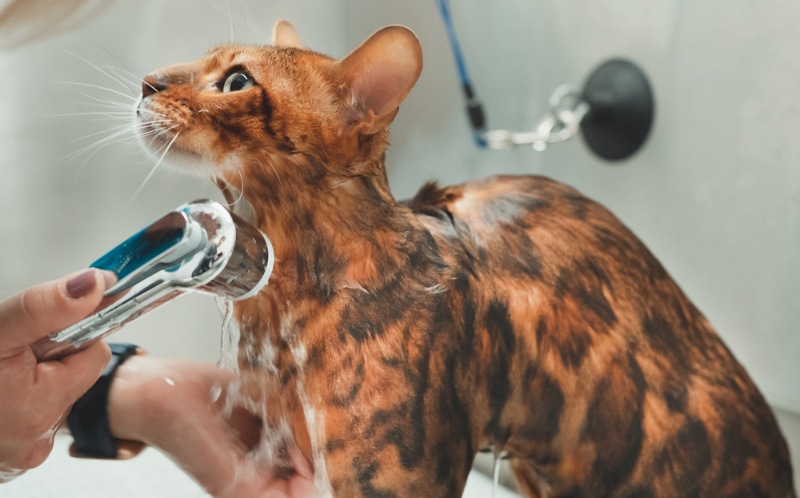If you are familiar with Trap, Neuter, and Return (TNR) and Trap, Neuter, Vaccinate, and Return (TNVR) programs, you may be wondering if you can adopt one of these ear-tipped cats. The answer is yes, you can adopt them! A tipped ear is just a universal indicator that the cat has been neutered in one of the TNR programs.
While most of the cats in the program are feral, some may have been abandoned and are people-friendly, so they are available for adoption. Read on to learn more!

Ear-Tipping: What Is It?

Most people living in neighborhoods with a community of feral cats may have seen cats with square-tipped ears. Surgical removal of a portion of the cat’s ear is done while the cat is under anesthesia to be spayed or castrated (neutered). The ear tipping is done to identify fixed cats and assure residents that they do not need to be concerned about more new kittens.
The TNR and TNVR programs were designed to help control the cat communities by neutering and spraying trapped cats and then returning them to their communities or neighborhoods that they came from. The programs help to reduce the outdoor cat population humanely, and tipping their ears is a mandatory part of the program.
Ear-tipping is a safe procedure that is not painful for the cat, and it heals quickly.
About Community Cats
There’s no universal consensus or official definition of a community cat. However, a community cat is loosely described as a cat that resembles your typical house cat, but it lives outdoors and does not have an owner. They’re also sometimes known as strays or ferals. Less common names are alley cats, barn cats, or neighborhood cats.
Though some people tend to describe stray and feral cats separately, others do not do so. This is usually due to the way the cats respond to the community in terms of their fear (or lack thereof). In some parts of the world, cats that are particularly fearful of humans are termed feral, whereas stray cats are defined as formerly owned cats that are displaced and living outdoors without an owner. However, in other parts of the world, cats with no history of ownership are very placid and calm around people, and cannot be distinguished from cats that did have former owners at some point in their lives.
Community cats primarily live in heavily populated or rural areas. They can be alone or in groups and are usually fed by and dependent on people in the community.
Since the outdoor cats can trespass in yards where they aren’t wanted, some homeowners find them a nuisance. Some people do not appreciate behaviors like digging, pooping, peeing in their gardens, and disturbing the resident cat. Others find feral cats to be a threat to wildlife, so the TNR programs help to eliminate some of the complaints and concerns.
Why Tip the Cat’s Ears?

Feral and stray cats can get easily frightened and run away from humans. Typically, community cats are not someone’s pet, and they have spent most or all their lives outdoors. As mentioned earlier, while some may be comfortable with humans, the willingness to socialize depends on the individual cat.
There are animal lovers everywhere who help care for and protect community cats. They help to trap, neuter, and release these cats, and ear tipping helps to identify them, so they are not re-trapped and experiencing unnecessary stress and discomfort.
The ear tipping is also helpful in identifying new cats in the community. The program also helps animal control officers differentiate between cats that have been treated medically and the ones that are still intact.

Conclusion
There are many benefits to the trap, neuter, and release programs. It provides control of the cat population, reduces complaints and mating behaviors, and provides cats with some well-being. And yes, cats that have their ears tipped as part of these programs can be adopted.
However, it will depend on whether the situation is suitable for the individual cat.
- Related Read: Is Cat Ear Tipping Cruel? Why Is It Done?
Featured Image Credit: Krishna777, Shutterstock










